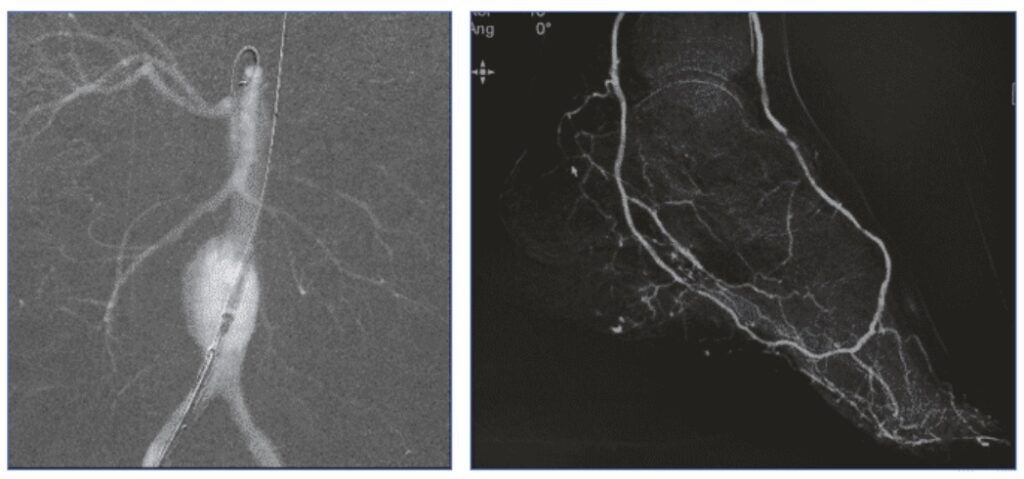Traditional angiogram or CT angiogram is done with injection of a liquid called contrast agent which help physicians see blood flow in the body. How ever it is associated with problems in patients with kidney failure and can potentially worsen it. Some people are allergic to iodine containing contrast material. Now, with the availability of high-resolution DSA and a reliable gas delivery system, CO2 angiography has become widely used for seeing blood vessels and endovascular procedures.
Because the use of CO2 is not associated with kidney damage or allergic reactions, it is increasingly being used as a contrast agent for seeing blood flow in the abdomen and legs.
CO2 is used to guide various vascular procedures, including angioplasty and stent placement, transcatheter embolization, and endovascular abdominal aortic aneurysm (AAA) repair as can be seen in the images. The first image shows an aortic aneurysm seen with CO2 and the second is an angiogram of the blood vessels of the foot.

Unlimited amounts of CO2 may be used for vascular imaging because the gas is effectively eliminated by means of respiration. However, the operator should allow sufficient time for its clearance.
CO2 is particularly useful for patients with poor cardiac and renal function who are undergoing complex vascular procedures. It cannot be used for procedures involving the heart or barin vessels.

